Seminars
Fall 2024 ECE 590 Graduate Seminars
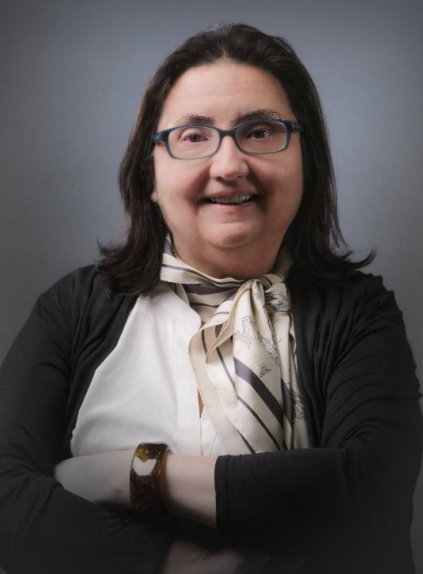
November 15, 2024
Revisiting Diffraction Gratings: From Transmission Asymmetry to Reconfigurable Photonics
Stavroula Foteinopoulou, Department of Electrical and Computer Engineering, UNM
3:00 pm, UNM Centennial Engineering Center, Room 1026
Online Guests: Contact Prof. Osiński <osinski@chtm.unm.edu> for a Zoom link
Abstract: Diffraction gratings are ubiquitous in optical set-ups for integrated photonics owing to their capability to transform the lateral momentum of light thus allowing to engineer the incoupling and out-coupling of optical beams. In this seminar, the fundamental underlying principles that bring new exotic capabilities to these traditional components will be discussed. In particular, it will be shown that a strongly asymmetric transmission can be obtained from a diffraction grating with pyramidal-shaped elements. Additionally, it will be demonstrated that on-off switching of negative beam-steering for MWIR light can be achieved by incorporating into the diffraction grating a suitable non-volatile phase-change material.
Bio: Dr. Stavroula Foteinopoulou is a Research Professor with the ECE Dept. at UNM. She received her Ph.D. from Iowa State U. and has held positions in U. of Namur (Belgium), FORTH (Greece), and U. of Exeter (UK). Her research focuses on theory and design of photonic platforms for extraordinary light control across the EM spectrum. She holds one US patent and has authored more than 40 journal publications and conference papers, which to-date received more than 3600 citations (source Google Scholar). She is serving as the feature editor for the Optica (formerly OSA) Optical Materials Express Journal, as an associate editor for the Journal of the European Optical Society: Rapid Publications, and has been the Chair of the annual SPIE conference on Active Photonic Platforms for more than 10 years. In 2016, she was honored by the American Physical Society (APS) as an outstanding referee, which is a lifetime recognition.

November 8, 2024
The U.S. Public-Private Partnership in Fusion Energy and Fusion Energy-Related Research in the UNM Plasma and Fusion Science Lab
Mark Gilmore, Department of Electrical and Computer Engineering, UNM
3:00 pm, UNM Centennial Engineering Center, Room 1026
Online Guests: Contact Prof. Osiński <osinski@chtm.unm.edu> for a Zoom link
Abstract: Controlling human-made climate change in a post-industrial society will demand the utilization of a range of carbon-free energy sources, as well as improvements in storage and distribution, efficiency, and conservation. One possible energy solution, suitable for large cities and heavy industry, is Nuclear Fusion. In the last decade, private companies – mainly startup companies – have invested billions of $US in fusion energy research. In order to further this effort, the U.S. Department of Energy (DoE) has initiated a public-private partnership in fusion research. In this talk, the basics of fusion energy and the current status of research will be reviewed. The landscape of private companies engaged in this work will then be briefly described. Finally, research conducted in the last decade related to Fusion Energy in the UNM Plasma and Fusion Science Lab will be discussed.
Bio: Dr. Mark Gilmore is a Professor in the ECE and Physics & Astronomy Departments at UNM. He received the B.S. from Boston University, and the M.S. from Northeastern University, both in EE, and the Ph.D. in Applied Physics from UCLA. He joined the UNM ECE Department in 2003 as an Assistant Professor. Prof. Gilmore has over 35 years of research experience in plasma physics, and has worked in wide variety of areas within plasma science, including industrial plasmas for printing and materials processing, plasma diagnostics, magnetic fusion for energy, turbulence and transport, ionospheric plasma physics, plasma sources, high-power microwave devices, laboratory astrophysics, and High-Energy-Density Physics. He currently serves as Interim Chair of the UNM Electrical and Computer Engineering Dept.

November 1, 2024
Medical Imaging and AI
Constantinos S. Pattichis, Department of Computer Science & Biomedical Engineering Research Centre, University of Cyprus, & CYENS Centre of Excellence
3:00 pm, UNM Centennial Engineering Center, Room 1026
Online Guests: Contact Prof. Osiński <osinski@chtm.unm.edu> for a Zoom link
Abstract: Advances in Artificial Intelligence (AI) are reshaping the landscape of medical imaging, offering unprecedented opportunities for enhanced diagnosis, treatment planning, and patient outcomes. This presentation will briefly highlight how medical imaging AI-driven technologies will help towards offering precision medicine services. Key areas of focus will include deep learning models for image segmentation, classification, and anomaly detection, as well as their integration into clinical workflows to assist radiologists in identifying complex patterns that might be imperceptible to the human eye. Furthermore, we will explore case studies that underscore the effectiveness of explainable AI (XAI) in medical imaging, demonstrating how it provides clear, interpretable insights that empower clinicians with deeper understanding and confidence in AI-driven diagnoses.
Bio: Prof. Constantinos S. Pattichis has 30 years of experience in eHealth and connected health, medical imaging, biosignal analysis, intelligent systems and explainable AI, and more recently in mHealth interventions based on X Reality applications. He has been involved in numerous projects in these areas funded by EU and other bodies, with a total funding managed in excess of 20 million euros. He has published 150 journal articles, 265 conference papers, 3 monographs, 30 chapters in books and co-edited 4 volumes, 22 journal special issues and 20 conference proceedings. He was the Technical Leader of the EU project funded under the Emergency Support Instrument Action for Cyprus to implement the EU Digital COVID Certificate Platform for the issuance of the corresponding certificates for vaccination, recovery, and laboratory testing, which has been used by more than 1 million users (eudcc.gov.cy). He is a member of the European Academy of Sciences and Arts, Fellow of IEEE, IET, International Academy of Medical and Biomedical Engineering (IAMBE) and European Alliance for Medical & Biological Engineering & Science (EAMBES).

October 18, 2024
An Overview of Inverse Problem Formulations and Solutions
Antônio J. Silva Neto, Rio de Janeiro State University, Brazil
3:00 pm, UNM Centennial Engineering Center, Room 1026
Online Guests: Contact Prof. Osiński <osinski@chtm.unm.edu> for a Zoom link
Abstract: A situation often encountered in various relevant applications of engineering and science is that, in general, parameters or functions used in modelling of systems and processes may be unknown. However, partial experimental data on observable indirect quantities may be available. Using the inverse problem approach, a link between models and experiments can be constructed, allowing the determination of the unknowns of interest. The parameters and functions involved in the models present random variations, and the experimental data are always contaminated by random noise. Such characteristics should be taken into account in the formulation and solution of inverse problems. In this talk, several inverse problems in engineering and environmental modelling will be presented, considering different formulation approaches and solution techniques.
Bio: Antônio J. Silva Neto is a Full Professor in the Department of Mechanical Engineering and Energy, Polytechnic Institute, Rio de Janeiro State University. He has a diverse international education background in Mechanical/Nuclear Engineering and Applied Mathematics: Mechanical/Nuclear Engineer (1983) and M.Sc. in Nuclear Engineering (1989), both from Federal University of Rio de Janeiro, Brazil, and Ph.D. in Mechanical Engineering (North Carolina State University, 1993) with a minor in Computational Mathematics. He first worked for the Brazilian National Commission on Nuclear Energy, CNEN (1984-1986) and Promon Engineering, the largest Brazilian private company in Consulting Engineering (1986- 1997). Since 1997, he has been with Rio de Janeiro State University, becoming a Full Professor in 2013. In 2021 he started a formal institutional cooperation with research groups of SENAI CIMATEC (Manufacturing and Technology Integrated Campus) in Brazil. He is a former president of the Brazilian Society of Computational and Applied Mathematics (2014-2017), and of the Brazilian Association of Mechanical Sciences and Engineering (2009-2013). Prof. Silva Neto’s main current research areas are: inverse problems; heat and mass Transfer; radiative transfer; computational intelligence; and environmental modelling. He is serving as Associate Editor for several journals in engineering and applied mathematics: Computational & Applied Mathematics (Springer, since 2005); Journal of Heat and Mass Transfer (ASME, since 2019); Journal of Computational Mathematics and Data Science (Elsevier, since 2021); and International Journal of Data Science and Analytics (Springer, since 2023).
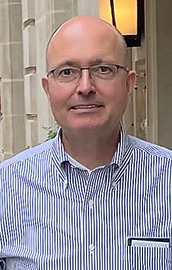
October 4, 2024
High Power RF Through the Lens of the SUMMA Foundation
Edl Schamiloglu, Department of Electrical and Computer Engineering, UNM
3:00 pm, UNM Centennial Engineering Center, Room 1026
Online Guests: Contact Prof. Osiński <osinski@chtm.unm.edu> for a Zoom link
Abstract: The SUMMA Foundation was founded in 1973 by the late Dr. Carl E. Baum and registered as a philanthropic organization to promote scientific and educational activities in the field of highpower electromagnetics (HPEM), also known as HPRF. The field of HPEM emerged from research on high-altitude electromagnetic pulse (EMP) and evolved to study sources of ultrawideband (UWB) radiation (now referred to as mesoband radiation) and narrowband highpower microwave (HPM) radiation (now referred to as hypoband radiation). Today this field includes sources of intentional electromagnetic interference (IEMI), which is of concern to civilian infrastructure as well as to nation’s militaries. This presentation will describe the activities of the SUMMA Foundation in advocating for HPRF research internationally. In addition, it will discuss the synergy between the work of the SUMMA Foundation, the development of HPRF, and the Applied EM Program in ECE@UNM.
Bio: Dr. Edl Schamiloglu is a Distinguished Professor in the Department of Electrical and Computer Engineering at UNM. He also leads the Directed Energy Center at UNM. He received the B.S. and M.S. degrees from Columbia University in 1979 and 1981, respectively, and the Ph.D. degree in Engineering from Cornell University in 1988. He joined UNM as an Assistant Professor in 1988. He is a Fellow of the IEEE, a Fellow of the American Physical Society, and in 2019 he received the inaugural IEEE NPSS Magne “Kris” Kristiansen Award for Contributions to Experimental Nuclear and Plasma Science. He has published over 200 refereed journal articles. He has supervised 40 Ph.D. dissertations and 40 M.S. theses.
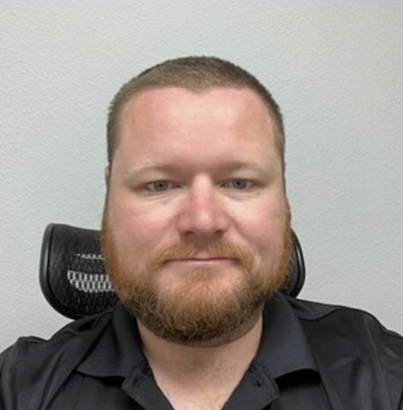
September 27, 2024
Food Manufacturing: The History, Development, and Challenges of Control Systems
Cormac O’Kelly, Southwest Cheese, Clovis, NM
3:00 pm, UNM Centennial Engineering Center, Room 1026
Online Guests: Contact Prof. Osiński <osinski@chtm.unm.edu> for a Zoom link
Abstract: This talk is focused on the manufacturing industry, in particular, food manufacturing. We will provide a brief overview of our company Glanbia, and our local subsidiary Southwest Cheese. We will cover the cheese and whey manufacturing process with details surrounding the manufacturing industry and the challenges we currently face. We will outline the life cycle of the process, discuss the technological advancement of food manufacturing in the last decade, and the impact of controls in the industry. Discussion will focus on industry best practices for automation and controls and the current setup of our facility. We will talk about the risk of cyber security and the work that is undertaken to secure our facilities from ransomware and other malicious software. We will then discuss how a large manufacturer addresses these areas and how they stay on top of new developments in a fast-moving technological world. Finally, we will briefly discuss Industry 4.0 and smart manufacturing technology that is emerging and how AI can impact the industry going forward.
Bio: Cormac O’Kelly received a B.Sc. degree in Mechanical Engineering, and a B.A. degree from University College Dublin, Ireland in 2011. He obtained a graduate engineering position for Glanbia after graduation and moved to the Southwest Cheese Facility in New Mexico in 2012. He has held various engineering positions, including Graduate Engineer, Project Engineer, Engineering Manager, Maintenance and Engineering Manager, and Environmental, Health, and Safety Engineer. He has led and implemented projects that value over $120M, has managed a team of over 60 people, and managed annual budgets in excess of $14M. In his current role, he is responsible for all engineering projects and processes, environmental, health and safety submissions to the appropriate state and national bodies, including EPA, New Mexico Environment Department, and OSHA.
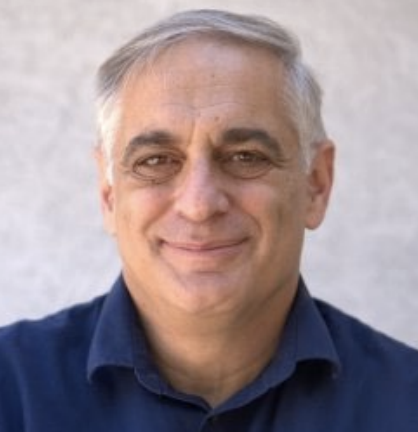
September 20, 2024
Large-Scale Video Analysis: A Frontier of Artificial Intelligence
Marios Pattichis, Department of Electrical and Computer Engineering, UNM
3:00 pm, UNM Centennial Engineering Center, Room 1026
Online Guests: Contact Prof. Osiński <osinski@chtm.unm.edu> for a Zoom link
Abstract: This talk is focused on the recent efforts of speaker’s group and hisr collaborators to process real-life video datasets used for clinical decision support and classroom video analysis. New models avoid the need and inherent biases of transfer learning, support interpretability, provide fast inference, and match or outperform current methods.
Bio: Prof. Marios Pattichis received a B.Sc. degree (High Hons. and Special Hons.) in computer sciences, a B.A. degree (High Hons.) in mathematics, an M.S. degree in electrical engineering, and a Ph.D. degree in computer engineering from The University of Texas at Austin, TX, in 1991, 1991, 1993, and 1998, respectively. He is currently a Professor and Director of online programs in the ECE Department at UNM. He is also the Director of the Image and Video Processing and Communications Lab (ivPCL). He was elected as a Senior Member of the National Academy of Inventors and a Fellow of the European Alliance of Medical and Biological Engineering and Science (EAMBES) for his contributions to biomedical image analysis.
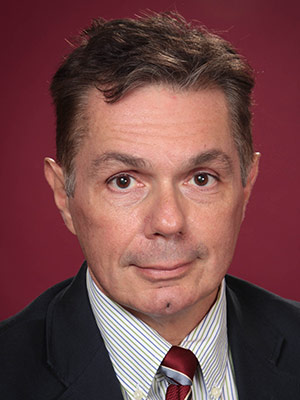
September 13, 2024
AI/ML-Enabled Intelligent Next-Generation Autonomous Network System: Performance Enhancement and Management
Michael Devetsikiotis, Department of Electrical and Computer Engineering, UNM
3:00 pm, Woodward Hall, Room 147, UNM
Online Guests: Contact Prof. Osiński <osinski@chtm.unm.edu> for a Zoom link
Abstract: This seminar presents ML/AI enabled intelligent next generation autonomous network system for network performance enhancement and management, particularly suited for networks like 5G, Beyond 5G (B5G), 6G and software-defined network (SDN). The seminar is segmented into four critical parts. Firstly, it focuses on quality of service (QoS) monitoring and provisioning using intelligent QoS agent design in 6G network. Secondly, it elaborates on long short-term memory (LSTM) and serial-parallel (SP) LSTM comparative analysis towards network traffic prediction in 6G networks. Thirdly, seminar delves into role delegation function as a service to improve reliability and latency in SDN. Lastly, touch down investigating further into AI-MLAgents for SDN Network Performance Enhancement for dynamic optimal routing. Overall, the research material holds substantial promise for transforming network management through automation, adaptability, and advanced intelligence. This seminar is based on the dissertation of Dr. Harsh Kumar, who graduated from UNM in May 2024, under the supervision of Prof. Devetsikiotis.
Bio: Prof. Michael Devetsikiotis received his Ph.D. in Electrical Engineering from North Carolina State University. He specializes in the design and performance evaluation of telecommunication networks, modeling and simulation of cyber-physical systems, and studying smart grid communications, smart cities, and the Internet of Things. He served for seven years as Department Chair of Electrical and Computer Engineering at UNM. He is currently President of the ECE Department Heads Association. He has published over 200 refereed publications on the design, simulation, and performance evaluation of telecommunication networks, socio-technical and cyber-physical systems, smart grid, smart cities, and the Internet of Things. He has received over 10,000 citations and was funded by NSF, NSERC, Cisco, Alcatel, and IBM. He became an IEEE Fellow in 2012 and has served as Chair of ComSoc’s Communication Systems Integration and Modeling Committee, member of Education Services Board, GITC Chair, and as an IEEE Distinguished Lecturer.
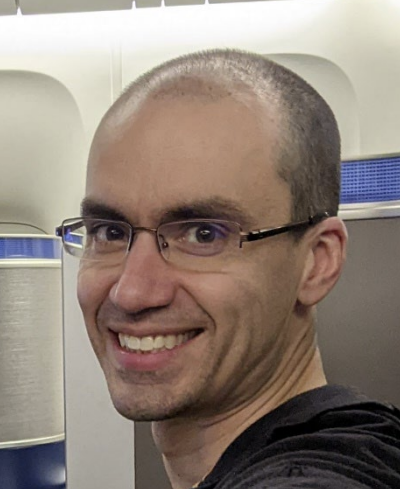
September 6, 2024
The Soft, Firm, and Hardware Behind a Quantum Computer
Jay Van Der Wall, Sandia National Laboratories
3:00 pm, Mitchell Hall, Room 102, UNM
Online Guests: Contact Prof. Osiński <osinski@chtm.unm.edu> for a Zoom link
Abstract: The increasing size and capabilities of quantum computers and algorithms regularly makes headlines. But behind the quantum aspects of these machines lie numerous classical enabling technologies. We will look at a sampling of these technologies behind QSCOUT, an open trapped-ion testbed at Sandia National Laboratories. These technologies include custom RFSoC boards, an MQTT-based messaging system, and software and techniques for shuttling ions around the trap.
Bio: Jay Van Der Wall is a Software Developer in the Photonic Microsystems Technologies department at Sandia National Labs since 2013. He received his MSE degree in Computer Science from Johns Hopkins University in 2009. At Sandia he has been responsible for various software-related aspects of trapped ion experiments from trap design to GUI development.
August 30, 2024
Secure Onboarding for IOT Devices: Challenges and Emerging Solutions
Giridhar Mandyam, Mediatek USA
3:00 pm, Department of Electrical and Computer Engineering, UNM
Online Guests: Contact Prof. Osiński <osinski@chtm.unm.edu> for a Zoom link
Abstract: IoT (Internet of Things) devices are becoming ubiquitous, and are enabling automation in businesses, homes, and city infrastructure. Many such devices are internet-enabled, and increasingly are connected via cellular networks. Onboarding of such devices remains an issue. Onboarding is the process of connecting a new or reconditioned device to a network. Onboarding is a critical aspect of enabling remote device management. IoT devices unfortunately are difficult to onboard, oftentimes due to a lack of intuitive user interface and limited processing capabilities. Therefore many device vendors have tried to streamline the process to allow for device onboarding upon first power-up with little to no user intervention (“zero-touch onboarding”). However, if the onboarding process is not secure then the devices themselves can be vulnerable to compromise. Depending on the application, this in turn can lead to more than just financial loss given the increasing use of IoT devices in critical operations such as smart city infrastructure or medicine. This talk will discuss the technical challenges in enabling secure IoT device onboarding, and will also provide an overview of recent approaches to solve these problems.
Bio: Dr. Girtidhar D. (Giri) Mandyam is the Chief Security Architect for Mediatek’s computing and automotive products. He received a BSEE in 1989 from Southern Methodist University (Magna Cum Laude), MSEE in 1993 from the University of Southern California, and PhD EE in 1996 from the University of New Mexico. He has also worked at Qualcomm Inc., Rockwell International, Texas Instruments, and Nokia. He was the Chair of the IoT Working Group in the Fast Identity Online (FIDO) Alliance, which developed the first industry standard for secure onboarding of IoT devices. Dr. Mandyam is inventor or co-inventor of more than 70 issued US patents, and was recognized in 2017 by Qualcomm with the IP Achievement Award. He has also published over 80 conference and journal papers, and 5 book chapters. He is a co-author of the text Third-Generation CDMA Systems for Enhanced Data Services (Academic Press, 2002). He is a Senior Member of the IEEE and has been a member of the editorial board of the IEEE Transactions on Wireless Communications.
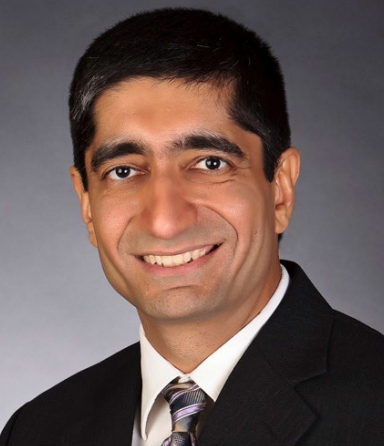
August 23, 2024
Future of Semiconductors: A Co-Design Approach for Materials, Devices, and Systems
Payman Zarkesh-Ha, Department of Electrical and Computer Engineering, UNM
3:00 pm, Department of Electrical and Computer Engineering, UNM
Online Guests: Contact Prof. Osiński <osinski@chtm.unm.edu> for a Zoom link
Abstract: Semiconductor industry has improved beyond imagination over the past 50 years. Today, AMD’s MI300X GPU has the largest transistor count totaling 153 billion transistors built on TSMC's 5 nm process. This improvement of eight-orders in magnitude of added capability (transistor count) is unheard of in any other industry worldwide. Although the semiconductor industry has made significant efforts over the years to get over the hurdles while scaling transistors, we are now reaching the physical limits of silicon, where a transistor contains only a few silicon atoms. The question is now “What is the future of semiconductors over the next 50 years?” The objective of this talk is to address this question by building a research team to develop a co-design scheme that will pave the way to the creation of a novel synthetic material using semiconductor nanowires in a reconfigurable neuromorphic integrated circuit that can potentially be a revolutionary breakthrough in semiconductor industry by breaking the existing physical limits in integrated circuits.
Bio: Dr. Payman Zarkesh-Ha is a Professor in the ECE Department and Director of the Center for High Technology Materials (CHTM) at UNM. He received his MS degree in Electrical and Computer Engineering from Sharif University, Tehran, Iran in 1994, and his Ph.D. degree in Electrical and Computer Engineering from Georgia Institute of Technology, Atlanta, GA, in 2001. Prior to joining UNM in 2006, he was a Senior Research Engineer with LSI Logic Corporation, Milpitas, CA, where he worked on interconnect architecture design for the next ASIC generations. His research interests include statistical modeling of nanoelectronic devices and systems, design for manufacturability, as well as low-power and highperformance VLSI design. He has published over 125 refereed papers and holds 22 issued patents in this field.
Spring 2024 ECE 590 Graduate Seminars

May 3, 2024
Intel Technology Roadmap and Challenges
Jamshid Sorooshian, Intel Corporation, Rio Rancho, NM
3:00 pm, ECE Building, Room 118
Online Guests: Contact Prof. Osiński <osinski@chtm.unm.edu> for a Zoom link
Abstract: The technology roadmap for the semiconductor industry has evolved from a standard Moore’s law outlook, to a more complex fab process line that has shifted from monolithic device fabrication. Today’s roadmaps show evolving integrated packaging schemes that begin to bridge the traditional fab process with that of the advanced packaging.
As such, the semiconductor industry is posed with new challenges that test the boundaries of material compatibility, thermal budgets, and 3- dimensional structural concerns (i.e., device bow, warpage, delamination, etc.)
This talk will touch on the considerations to reach our current state, and the path forward.
Bio: Dr. Jamshid Sorooshian is the New Mexico Site Manager for Program and Technology at Intel, focused on specialty processes specific to the New Mexico site and the broader disaggregate manufacturing organization. He received his PhD from the University of Arizona from the Department of Chemical Engineering with a focus on semiconductor planarization processes. He has spent his professional career at Intel Corporation spanning roles in Process Engineering, Yield and Integration, Technology and Development, and Technology Transfer management. He currently manages all aspects of cost, technology risk assessment, and technology transfer for the Rio Rancho site.

April 26, 2024
Enhanced Multi-Way Time Transfer for HighPrecision Time Synchronization among UASs
Khanh Pham, Air Force Research Laboratory
3:00 pm, ECE Building, Room 118
Online Guests: Contact Prof. Osiński <osinski@chtm.unm.edu> for a Zoom link
Abstract: This talk begins with a framework of enhanced two-way time transfer (TWTT) that is capable of achieving high-precision (e.g., 100 picoseconds) time synchronization of multiple distributed RF sources located on UASs in a GPS-denied environment. The proposed Enhanced Multi-Way Time Transfer relaxes two conditions of traditional TWTT: (i) Time at which the time-based signals are transmitted are the same for both Transmit and Receive sides and (ii) Propagation delays of time signals must be the same in both directions. Event-driven numerical simulations are also implemented and analyzed.
Bio: Dr. Khanh D. Pham is a supervisory principal aerospace engineer at the Air Force Research Laboratory / Space Vehicles Directorate and an adjunct research professor in the ECE Department at UNM. He is a Fellow of the Institute of Electrical and Electronics Engineers, National Academy of Inventors, Air Force Research Laboratory, American Astronautical Society, Society of Photo-Optical and Instrumentation Engineers, Institution of Engineering and Technology, Royal Aeronautical Society, Royal Astronomical Society, International Association for the Advancement of Space Safety, and Asia-Pacific Artificial Intelligence Association. He holds 35 US patents.

April 19, 2024
Combating Noise on Quantum Computers
Milad Marvian, Department of Electrical and Computer Engineering, UNM
3:00 pm, ECE Building, Room 118
Online Guests: Contact Prof. Osiński <osinski@chtm.unm.edu> for a Zoom link
Abstract: Quantum computers have the potential to solve certain computational tasks significantly faster than classical computers. Although the theory of quantum fault-tolerance ensures that quantum computers can operate reliably in the presence of decoherence and noise, achieving such noise levels in experiments remains extremely challenging. In this talk, the basics of a few strategies to reduce and correct errors in quantum computers will be discussed.
Bio: Dr. Milad Marvian is an Assistant Professor in the ECE Department and also a member of the Center for Quantum Information and Control (CQuIC). Before joining UNM in 2020, he was a postdoctoral associate at Massachusetts Institute of Technology. He completed his Ph.D. in Electrical & Computer Engineering in 2018 at the University of Southern California.

April 12, 2024
Wet Chemical Processes in Silicon Semiconductor Manufacturing
David J. Maloney, Technic Inc. and Linx Consulting, LLC, Pleasanton, CA
3:00 pm, ECE Building, Room 118
Online Guests: Contact Prof. Osiński <osinski@chtm.unm.edu> for a Zoom link
Abstract: The ever-increasing complexity demanded by advanced semiconductor manufacturing naturally drives concurrent complexity in all of the processes and materials that enable leading-edge microprocessors, memory, and ASIC products, and this extends to the wet chemical treatments that are heavily employed in advanced fabs. Starting with the advent of the RCA Cleans suite of processes, this talk reviews the history of liquid-phase chemical processing in semiconductor fabrication, from Si surface preparation through wafer-level packaging (“WLP”), and covers wet photoresist removal, selective wet etching, post-plasma etch cleaning, and post-CMP cleaning. The breadth and variety of chemistries and processes required to sustain the stringent demands of leading-edge Si processing will be highlighted.
Bio: Dr. David J. Maloney is an independent consultant to the chemical industry with a focus on the electronics materials and chemical manufacturing and blending sectors. His career has included a wide range of roles at DuPont, Intermolecular Inc., and several startup companies. He currently supports several organizations, including Technic Inc., a supplier of high-purity formulated solutions to the semiconductor industry; and Linx Consulting, the leading electronics materials consultants within the semiconductor industry. Dr. Maloney holds degrees in chemistry from McGill University (B.Sc.), Texas A&M University (Ph.D.) and the University of California, Berkeley (MBA). He has authored over 40 peer-reviewed publications and patents.

April 5, 2024
Need Help Moving a Table at Home or Repairing a Satellite in Space? Robots Can Help You!
Rafael Fierro, Department of Electrical and Computer Engineering, UNM
3:00 pm, ECE Building, Room 118
Online Guests: Contact Prof. Osiński <osinski@chtm.unm.edu> for a Zoom link
Abstract: There is a technique called Decentralized Adaptive Control. In this seminar, I will demonstrate how it can assist you in rearranging your furniture, opening doors, moving boxes, and performing other complex tasks. Additionally, I will showcase several recent and ongoing projects at the AgMan and MARHES Labs, including catching a lost drone, monitoring CO2 levels in volcanoes in collaboration with my colleagues from Computer Science, stabilizing and repairing a satellite in orbit, and piloting an omnicopter.
Bio: Rafael Fierro is a Professor in ECE at UNM since 2007. He earned his MSc. in control engineering from the University of Bradford UK in 1990 and completed his Ph.D. in electrical engineering at the University of Texas at Arlington in 1997. Before UNM, he conducted postdoctoral research at the GRASP Laboratory at the University of Pennsylvania and later held a faculty position at Oklahoma State University. His research focuses on robotic networks, multi-agent systems, UAVs, and collaborative robot manipulation. Supported by the National Science Foundation (NSF), AFRL, DOE, Sandia National Laboratories, Northrop Grumman, NATO, and the Breakthrough Foundation, he directs the AFRLUNM Agile Manufacturing Center (AgMan) and the Multi-Agent, Robotics, and Heterogeneous Systems (MARHES) Laboratory. He received a Fulbright Scholarship, an NSF CAREER Award, and the 2008 ISA Transactions Best Paper Award.

March 29, 2024
An Introduction to the Nuclear Electromagnetic Pulse
William Prather, Air Force Research Laboratory, Kirtland AFB, NM
3:00 pm, ECE Building, Room 118
Online Guests: Contact Prof. Osiński <osinski@chtm.unm.edu> for a Zoom link
Abstract: High-altitude nuclear electromagnetic pulse (HEMP) has been recognized as a threat to electrical and electronic equipment since the early 1960s. It is becoming increasingly important today because of the growing global nuclear threat and the increased dependence of all of our forces on computers and electronic systems to carry out their mission. The purpose of this talk is to describe the phenomenon of HEMP, the effect it has on aircraft, and the methods used for hardening and testing modern aircraft.
Bio: Dr. William Prather received the BSEE and MSEE degrees from the University of New Mexico in 1970 and 1975 respectively. He worked at the Air Force Research Laboratory at Kirtland AFB from 1970 until his retirement in 2018. Since then, he has continued to support nuclear effects programs as a member of the Emeritus Corps. His special interests include EMP simulation, interaction and coupling, aircraft EMP hardening design, and the development of CW test methods for measuring system shielding. He has been very active in writing FAA and Military Standards and Handbooks for the design of protection of aircraft and Navy ships against EM Hazards. Mr. Prather is the recipient of the Peter Haas Award and the Carl Baum Medal. He is a Fellow of the EMP Society, a Senior Member of IEEE, a member of URSI Commission E and a member of Eta Kappa Nu.

March 22, 2024
Novel Processes for Advanced Nanoelectronic Devices
Shashank Sharma, Applied Materials, Santa Clara, CA
3:00 pm, ECE Building, Room 118
Online Guests: Contact Prof. Osiński <osinski@chtm.unm.edu> for a Zoom link
Abstract: Relentless scaling over the past several decades of semiconductor devices has been driven by performance, power, density, and cost requirements. Semiconductor industry has been successfully meeting these requirements with continued innovations in design, integration, and materials engineering. Logic transistor technology transitioned from planar geometry to 3D geometries such as FinFETs and horizontal gate all around, while introducing numerous new materials and processes across front end of the line all the way into back end of the line. Memory devices on the other hand have also seen integration in third dimension both in NAND and DRAM. This talk reviews some of the key challenges introduced by the new device architectures and various materials processing innovations that enable continued scaling.
Bio: Dr. Shashank Sharma holds the CTO position in Front End Products business unit in Semiconductor Products Group at Applied Materials. He has more than 20 years experience in the semiconductor industry, with the past >12 years at Applied Materials, developing advanced semiconductor process technologies in the areas of thermal and activated species treatment. He has authored/co-authored more than 60 publications and is credited with more than 24 granted patents. Dr. Sharma received his M.S. and Ph.D. degrees in Chemical Engineering from the University of Louisville, Kentucky in 2000 and 2003, respectively.

March 8, 2024
Fostering Link and Service Continuity in Connection-Critical Scenarios
Claudio Sacchi, University of Trento, DISI, Trento, Italy
3:00 pm, ECE Building, Room 118
Online Guests: Contact Prof. Osiński <osinski@chtm.unm.edu> for a Zoom link
Abstract: One of the claimed challenges of 5G and beyond standards is to provide service continuity in network scenarios where the connection links are discontinuous. In this seminar, some very recent results will be shown concerning this topic. The first series of results will deal with the use of Unmanned Aerial Vehicles (UAVs) to develop a transparent multi-frequency relay network performing signal amplification and frequency conversion between a satellite-based 5G network and User Equipment (UE). The claimed objective of the considered approach is to guarantee the link continuity also in the unpleasant case of disruption of the wireless terrestrial coverage. The second series is related to an experimental testbed leveraging Multi-Access Edge Computing (MEC) to maintain service availability in a satellite-aided 5G network configuration, where the terrestrial coverage is reduced or even missed. The global outcomes of the research work shown in the seminar will provide some guidelines to the design and implementation of robust radio network configurations capable of tackling emergency situations and solving urgent digital-divide issues.
Bio: Claudio Sacchi received the “Laurea” degree in Electronic Engineering and the Ph.D. in Space Science and Engineering from the University of Genoa, Italy, in 1992 and 2003, respectively. From 1996 to 2002, he was a Research Cooperator with the Department of Biophysical and Electronic Engineering (DIBE), University of Genoa, and with the National Italian Consortium in Telecommunications (CNIT), managing project activities in the field of multimedia surveillance systems and satellite communications. In August 2002, he joined the Department of Information Engineering and Computer Science (DISI), University of Trento, Italy, as an Assistant Professor. He was promoted to Associate Professor in December 2020. He has authored and coauthored more than 140 papers published in international journals and conferences. He is a member of the IEEE ComSoc, IEEE BTS, IEEE VT, and IEEE AESS. Since 2019, he has been coordinating and chairing the IEEE AESS technical panel: “Glue Technologies for Space Systems” that was awarded by AESS as “Outstanding Panel of the Year” in 2020 and 2021. Since January 1st, 2023, he has had double affiliation with UNM as Research Professor. His main research interests are related to emerging satellite and aerospace communications and broadband mobile communications in 5G and 6G systems.

March 1, 2024
Nanopositioning and Nanomeasuring Technology for Traceable 3D Nanofabrication and Surface Inspection
Dr. Ingo Ortlepp, Technical University Ilmenau, Germany
3:00 pm, ECE Building, Room 118
Online Guests: Contact Prof. Osiński <osinski@chtm.unm.edu> for a Zoom link
Abstract: Nanopositioning and nanomeasuring machines (NPMMs) have proven their potential for nanometer accurate measurements in volumes up to 200 mm x 200 mm x 25 mm with 5 axis operation in several fields. As these machines offer picometer resolution and nanometer uncertainty, the goal is to transfer their precision to fabrication and patterning. So far, our NPMMs have been equipped with laserbased and tip-based tools (1PP, 2PP, NIL, AFM, SPL) and combinations thereof. The goal is basic research on these technologies, to estimate the potential for later use in an industrial scale. The talk will describe the basics and parameters of NPMMs and the nanofabrication tools that we are currently working on. Focus is on the parameters in measurement mode and the accomplished fabrication results.
Bio: Dr. Ingo Ortlepp is a postdoc at the Institute for Process Measurement and Sensor Technology at TU Ilmenau and managing director of the research training Group NanoFab there. His research fields are dimensional metrology, in particular interferometry (concepts, optics, signal processing, laser sources), nanopositioning and nanomeasuring machines (concepts, mechanics, measuring strategies) and tools for measuring and patterning (optical, tip-based). He received his diploma in mechanical engineering from and in 2007, and his PhD in 2020 in the field of standing wave interferometry, both from TU Ilmenau.

February 16, 2024
Human-Infrastructure Interfaces, Fulbright Experiences Overseas, and Advancing Journal Publications
Fernando Moreu, PE, PhD, The University of New Mexico
3:00 pm, ECE Building, Room 118
Online Guests: Contact Prof. Osiński <osinski@chtm.unm.edu> for a Zoom link
Abstract: This presentation summarizes new research on Human-Infrastructure Interfaces (HII) advancing new bi-directional interfaces between human, machines, and infrastructure. The implementation of HII theory is achieved connecting new sensor technologies and Augmented Reality with infrastructure performance. Applications include structural dynamics and control, damage quantification, engineering learning, and humanmachine interfaces. New human-in-the-loop theories and experiments and applications facilitate trusted performance-based monitoring, robot control, and disaster recovery. Results include experiments and implications to Digital Twins and infrastructure management from cradle to grave using new technologies. Additionally, the speaker will share with the audience the work conduced during his Fulbright Fellowship at Taiwan last academic year, and advice for graduate (and undergraduate) students regarding research and scholar publications.
Bio: Fernando Moreu is an Associate Professor at the Department of Civil, Construction, and Environmental Engineering (CCEE) at the University of New Mexico (UNM). He holds courtesy appointments in the Departments of Electrical & Computer Engineering, Mechanical Engineering, and Computer Science at UNM. He is the founder and director of the Smart Management of Infrastructure Laboratory (SMILab). Prof. Moreu’s research interests include structural dynamics and control, structural health monitoring, wireless smart sensor networks, cyberphysical systems, computer vision, augmented reality, unmanned aerial systems, bridge engineering, and aerospace operations. Prof. Moreu received his MS and PhD degrees in structural engineering from the University of Illinois at UrbanaChampaign (2005 and 2015, respectively). He is the recipient of the Fulbright Hays Faculty Research Abroad and was a visiting professor at National Taiwan University in Taipei in Spring and Summer of 2023. He was the 2022 outstanding junior faculty researcher award at the UNM School of Engineering. Prof. Moreu’s projects are funded by the DOE, NSF, ONR, NAS, US DOT, TRB, New Mexico Space Grant Consortium, and the commercial sector. He is a member of ASCE, ASME, ASNT, ASEE and AREMA, and a registered Professional Engineer since 2010. Prof. Moreu is the current Secretary of the ASCE EMI Technical Committee in Structural Health Monitoring and Control (SHMC) (2023-2026) and also the current secretary of the Society for Experimental Mechanics Technical Division of Dynamics of Civil Structures (2023- 2025).

February 9, 2024
Engineering the Future of Space Research
Christos Christodoulou, The University of New Mexico
3:00 pm, ECE Building, Room 118
Online Guests: Contact Prof. Osiński <osinski@chtm.unm.edu> for a Zoom link
Abstract: COSMIAC is a Research Center in the School of Engineering at UNM that addresses contemporary engineering challenges crucial to the 21st century, spanning space technology, cybersecurity, PNT vulnerabilities, drone technology, space power beaming, RF and radiation effects on space electronics, and 6G communications.
Their diverse research portfolio is dedicated to engineering innovation that directly contributes to solving global issues. Positioned as New Mexico's aerospace research hub, COSMIAC plays a pivotal role in reinforcing UNM's leadership within the aerospace sector.
This seminar provides an overview of the ongoing research projects at COSMIAC and highlights opportunities for students to engage with and contribute to these projects.
Bio: Distinguished Professor Christos Christodoulou received his Ph.D. degree in Electrical Engineering from North Carolina State University in 1985. He joined the Electrical Engineering Department at UNM, where he served as the Chair of the Department from 1999 to 2005 and as the Dean of the School of Engineering (2017 to 2023). Currently, he is serving as the Director of COSMIAC. He is a Life Fellow member of IEEE and a member of Commission B of URSI. He is the recipient of the 2010 IEEE John Krauss Antenna Award, the 2022 IEEE Henning Distinguished Mentoring Award, and the 2023 IEEE Chen-To Tai Distinguished Educator Award. Since 2013, he has been serving as the series editor for Artech House Publishing company for the areas of Antennas, Propagation, and Electromagnetics. He has published over 600 papers in journals and conferences, has 20 book chapters, and has co-authored 9 books. He has also served as the main advisor for 40 PhD and 75 MS students.
